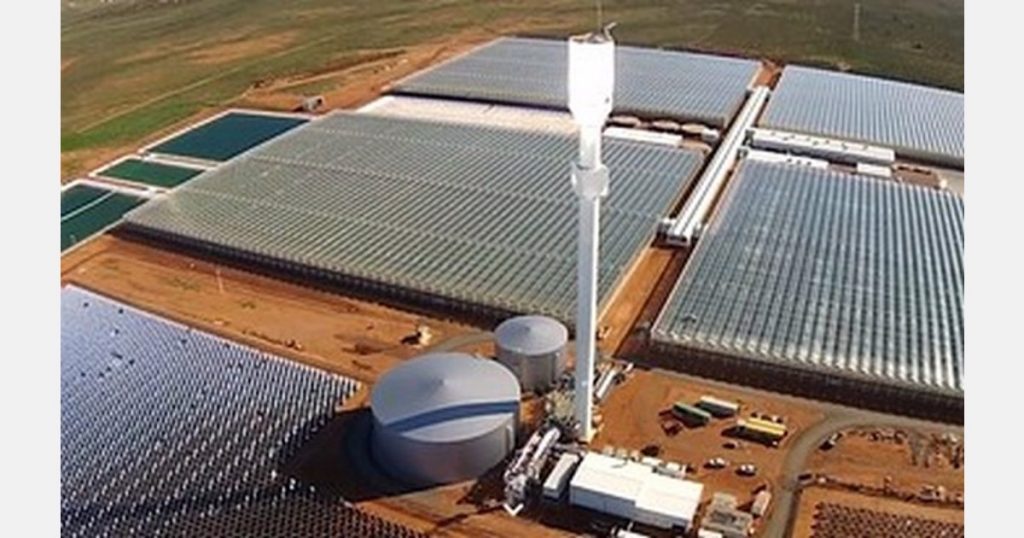For some 300 days a year, Sundrop Farms 127m tall central solar power tower shines on the tomato farm near Port Augusta (at the northern end of South Australia’s Spencer Gulf). Around it, there are 12.5 hectares of mirrors reflecting the sun on to its collector.
This enables Sundrop Farms to grow tomatoes in the desert. Some 13,500 tons of tomatoes are grown annually with just sunlight and seawater, accounting for more than 10 percent of the country’s truss tomatoes.
The thermal solar tower has a “thermal” rating of 39MW, but only 1.5MW for electricity. The desalination unit produces pure water to irrigate the crops, and the heat and carbon dioxide keep the tomatoes in the optimum atmosphere to facilitate year-round photosynthesis.

CEO Stephen Marafiote explains that the concept is built from components of pre-existing technologies: the energy system is from Denmark and the US, the turbines from Germany while the semi-closed greenhouses, the most advanced in the world because they can be cooled as well as heated, are from Holland. “Each of these is a proven technology but the way they work together is the innovation here.” he tells reneweconomy.com.au.
Marafiote says Sundrop Farms was built with food security in mind. “As we see climate change and as we see continued pressure on agricultural land – there are a number of issues that add up to food security.” This, he says, is a legacy issue: sites of major towns were historically chosen because of their excellent agricultural land.
Inside the fifty hectares of greenhouses are rows of tomatoes hanging off PVC pipes more like vines than plants. The tomatoes from here are allowed to ripen on the plant so receive the salts and sugars.


